The Montessori bed, everything you need to know
Categories:
Children's Room
 Choosing the right baby blanket dimensions according to season and age
Choosing the right baby blanket dimensions according to season and age
 How to attach a headboard (with or without drilling): quick and effective soluti
How to attach a headboard (with or without drilling): quick and effective soluti
 Waterproof sheet or mattress protector: the best solution by age group
Waterproof sheet or mattress protector: the best solution by age group
 27 Original, Useful, and Trendy Christmas Ideas for Teens 2025
27 Original, Useful, and Trendy Christmas Ideas for Teens 2025
 Christmas Activities for Baby: Creative Ideas for Home & Daycare
Christmas Activities for Baby: Creative Ideas for Home & Daycare
The Montessori pedagogy was conceived by Maria Montessori in 1907. This education method is based on the sensory and kinesthetic education of the child. It requires adapted pedagogical tools and furniture, which includes the Montessori bed.
The Montessori bed is positioned at floor level. It is not encumbered by feet or surrounding bars, even for the youngest babies. Its objective is to encourage the child's freedom and leave them free to emancipate themselves at their own pace.
The use of a Montessori bed requires parents to work on themselves, as they must allow the child the possibility to make their own choices. Indeed, the Montessori method is based on trust: parents must trust their child to make the right decisions, which should encourage the child to gain self-confidence.
Thus, the bed without bars and close to the floor allows the child to move as they wish within their room. They can go about their activities, but also use their bed to play or read when they are old enough.
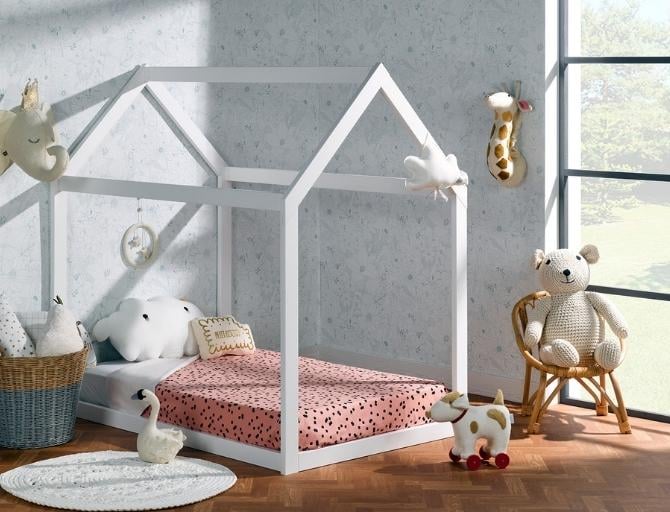
The implementation of a Montessori bed in a room implies that the rest of the furniture is in line with this education method. The child thus has child-sized facilities that allow them to access their toys and games, their books, as well as their clothes.
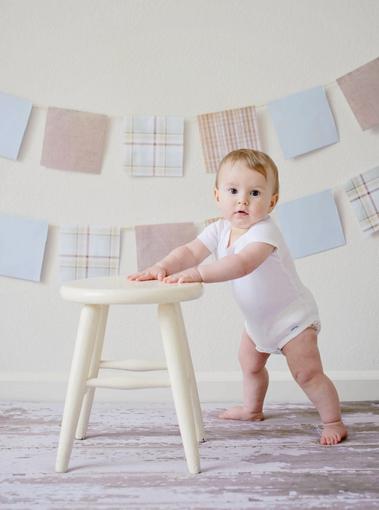
Most parents wait until the child acquires a certain level of autonomy before installing a Montessori bed, around the age of 2 to 3 years. However, the Montessori method is designed to be applied from the child's first year, as they become aware of their movements.
Thus, some parents decide to install a Montessori bed from the start, to accustom the baby to greater freedom.
However, certain precautions should be taken for the child's well-being and safety. The use of a topponcino is recommended in addition to the mattress, for example. This accessory is dedicated to very young children who do not yet have any autonomy. It is a kind of very thin oval mattress, whose shape helps maintain the baby's body and head during the first months of its existence.
If you use a Montessori bed for a baby under two years old, the topponcino, which adjusts to its shape and size, prevents the child from rolling onto the floor. However, it allows them to wiggle freely. The topponcino is soft and gentle, ensuring perfect comfort for the child's sleep.
Thus, your child can sleep in a Montessori bed from the age of 3 months until the onset of puberty between 10 and 12 years old.
The Montessori bed allows the child to grow at their own pace and encourages them to emancipate themselves as soon as they feel the need.
They learn to make their first decisions, which is not the case in cribs where the child is constrained and dependent on their parents.
The objective of the Montessori pedagogy is to develop cognitive and sensory abilities by freely evolving in one's room.
The child moves as they wish and decides how to use their bed. They use it for sleeping, but can also use it as a playground, as well as to start reading.
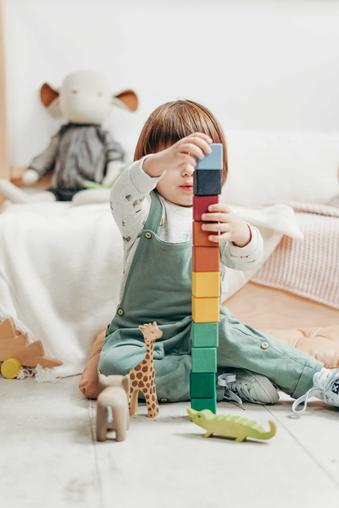
The Montessori bed is located at floor level and therefore has a rudimentary structure to accommodate the mattress. It can also offer a more elaborate design with the so-called "house bed". Both beds share a minimalist design, an almost always wooden structure in pastel tones, as well as a low bed base height.
The Montessori house bed is highly appreciated by children, as its structure evokes a cocoon in which the child feels protected and can fully appropriate. The notion of "house" is linked to this protection, as well as to the notion of territoriality. Children love to build houses that become their exclusive territory and that they only share with people who are very close to them and in whom they have complete trust.
Wood is a warm material that adds to the intimacy of the Montessori house bed. Besides its function as a bed, it invites the child to develop their imagination.
If you choose a Montessori house bed, you must ensure that it maintains the simplicity desired by the founder of the method. The structure should remain as rudimentary as possible and not be cluttered with heavy decorations. The floor-level height also remains a fundamental principle of the Montessori bed.
Be aware that there are convertible house beds that come with an extension kit. As these beds are highly appreciated by children, some prefer to keep them for as long as possible. The convertible house bed transforms from 90 x 140 to 90 x 190 centimeters, thanks to its extension kit.
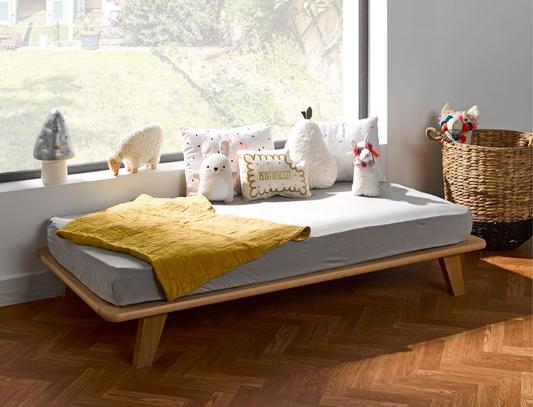
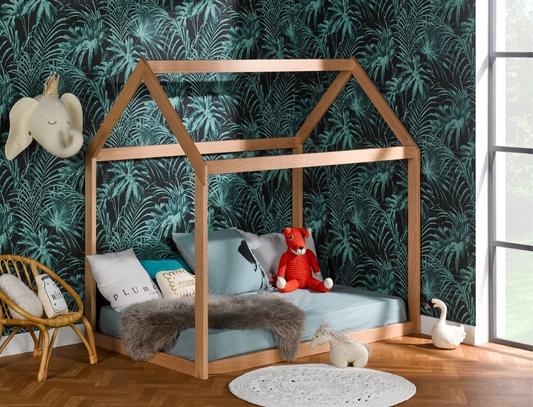
There are no specific recommendations for the mattress of a Montessori bed, except to maintain a reasonable height. The principle being to keep the bedding at floor level, you should not raise it with a mattress that is too thick.
In any case, the height of a mattress is by no means a guarantee of quality. Mattresses are now designed with raw materials that ensure an ideal density to make a mattress that is neither too firm nor too soft. The average thickness of a quality mattress is between 12 and 15 centimeters.
The raw materials of the mattress must be hypoallergenic. The advantage of many natural materials is that they naturally act as a repellent against dust mites.
Natural materials are to be preferred, both for the body of the mattress and for its ticking that envelops it.
You have a choice between latex foams (from the rubber tree, Hevea), polyurethane foam (polymer of urethane, an organic molecule), wool or coconut fiber. The first two materials are the most suitable. Wool is often too soft and coconut fiber too hard.
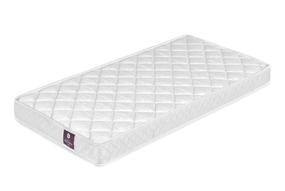
The memory foam mattress is not recommended, as it does not offer sufficient support for the child's fragile spine. It is also unsuitable for a baby who will tend to sink in and have difficulty moving and turning. Furthermore, the memory foam mattress manages heat less well than others, which is a handicap for children who perspire abundantly.
Natural raw materials are ideal for the ticking. They should be breathable to easily evacuate perspiration. Bamboo fiber and Tencel (derived from wood pulp) are perfect.
Regarding its dimensions, they are determined by the bed structure. Discover our selection of mattresses for children's beds.
Wood represents the ideal material for the Montessori bed. To respect the Montessori philosophy, the bed structure remains particularly simple, even for the house bed.
Its color uses pastel tones and the decoration uses no frills. Check that the paints used are eco-friendly, to respect your child's health as well as the environment.
It is always advisable to support our wood industry and order your Montessori bed from a French manufacturer. You will discover on our shop a selection of Montessori beds manufactured in our factory from eco-friendly wood.
